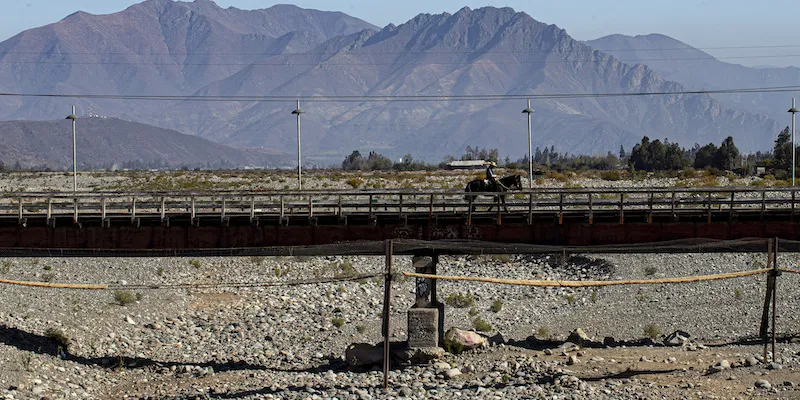In Greater Santiago, the capital of Chile, extraordinary water rationing measures are being implemented due to the severe summer drought that has afflicted various parts of the country for more than 12 years. It is the first time in the history of the city of almost 6 million that such strict restrictions are being used to solve a now wellknown and distressing problem: the governor of the city’s metropolitan area reminds that drought is closely linked to climate change , said Claudio Orrego, one has to be prepared “that there might not be enough water for everyone”.
Announced at a news conference on Saturday, the measures center on an alert system based on the water levels of the Maipo and Mapocho rivers, which provide much of the city’s water resources.
The ration plan contains four alert levels, indicated by four colors from green to red. The protocol states that when the water levels in the two rivers fall below certain levels, the water pressure in different areas of the city must be reduced. It also states that in emergencies (denoted by the red color) the water supply in some areas must be cut off alternately every 12, 6 or 4 days for a maximum period of 24 hours.
The suspension of water supplies provided by the red alert is expected to affect about 1.7 million people, more than a third of the city’s residents.

(Government of Santiago de Chile)
Even prolonged droughts are quite common in Chile, but over the past 12 years the situation has been particularly serious in the central and northern parts of the country, and it is feared that by 2060 all water reserves in the region will be exhausted, which is at risk.
For example, Santiago recorded 78mm of yeartodate rain last August, compared to 180mm for the same period last year. The severe drought that has ravaged the Santiago area every summer since 2010 has posed major problems for agriculture and is also decimating honey bee populations, according to a group of beekeepers who had organized an unusual protest outside the city’s presidential palace.
“We are in a situation unprecedented in Santiago’s 491year history,” Orrego said during Saturday’s news briefing. “For the first time in its history, Santiago has implemented a water rationing plan due to the severity of climate change.” Orrego said the government is taking action , to prevent an extreme situation, and Santiago residents would have to “prepare for the fact that there may not be enough water for all the people who live there; He added that “it’s important for citizens to understand that climate change is here to stay” and that its impacts are not “just global” but also “local”.
Also read: The meaning of the “fog oases” in the Atacama desert

